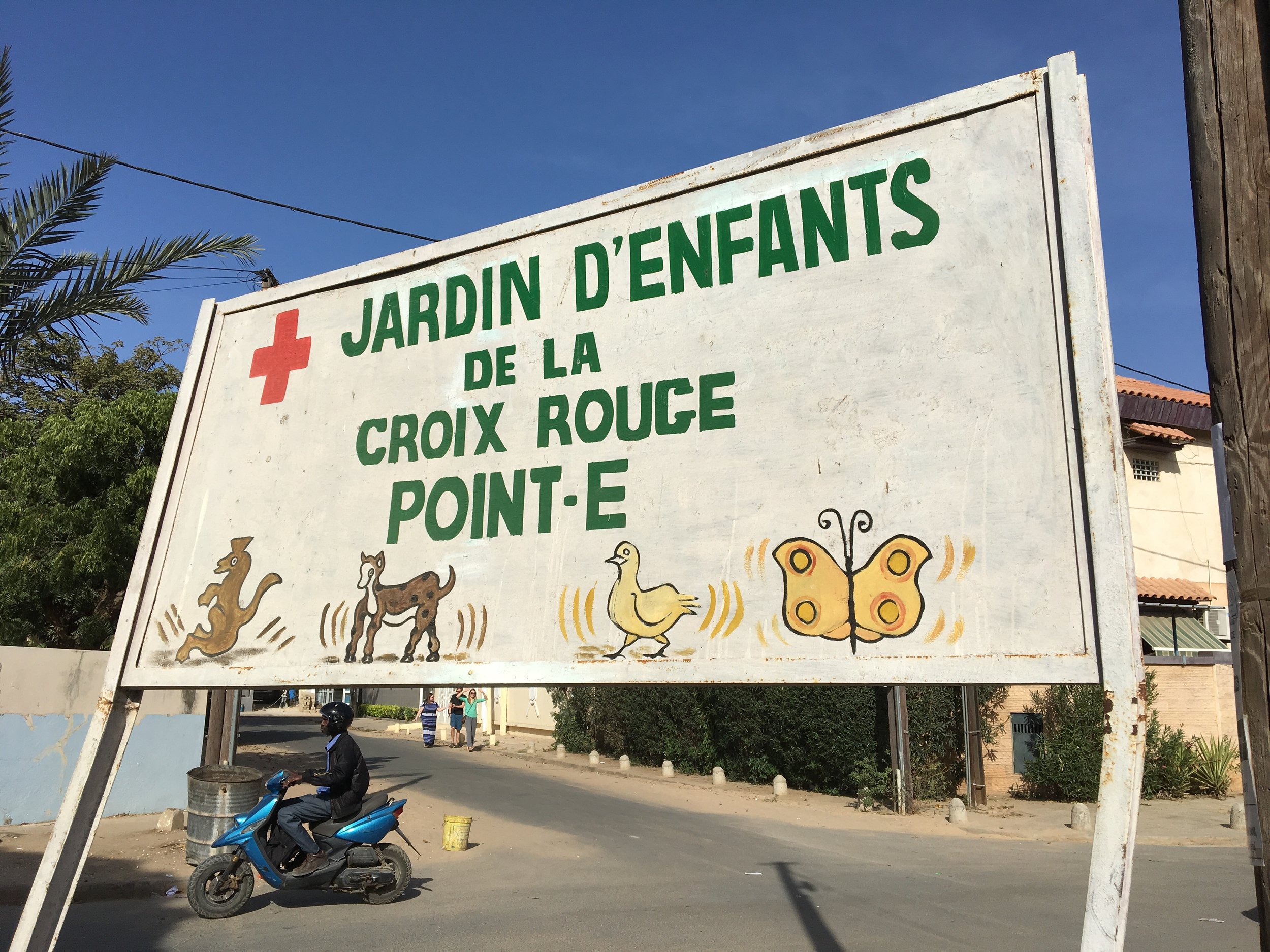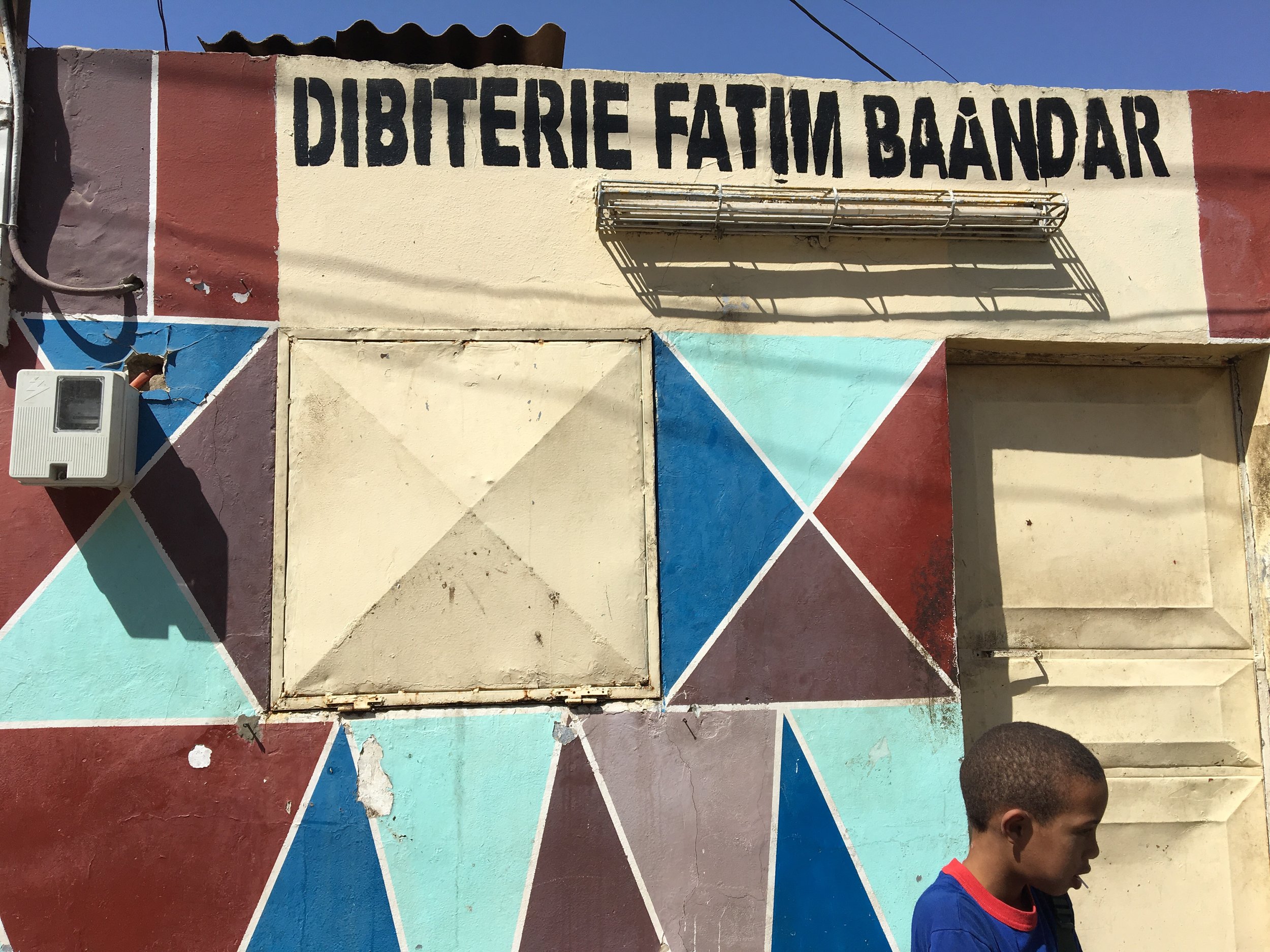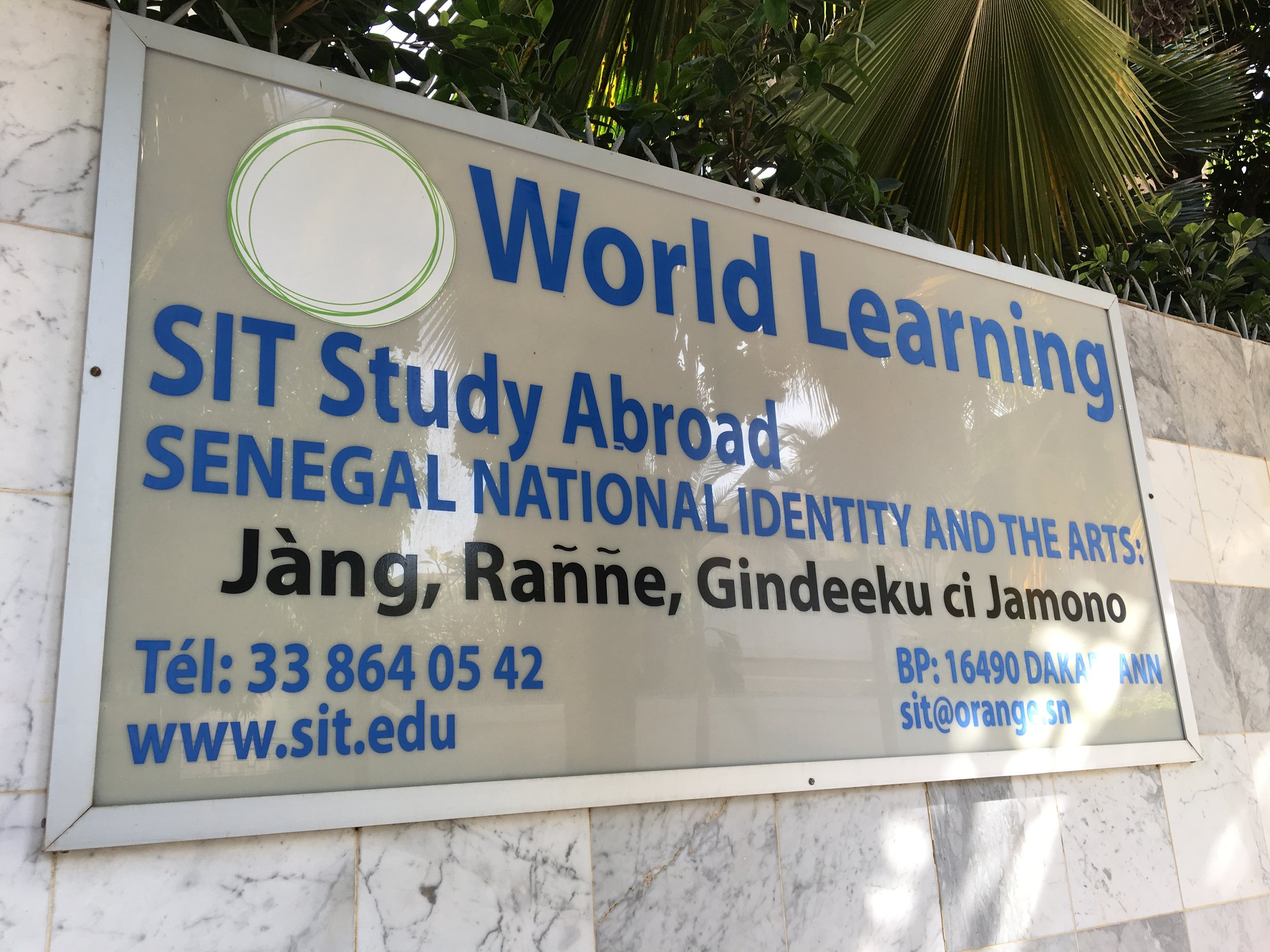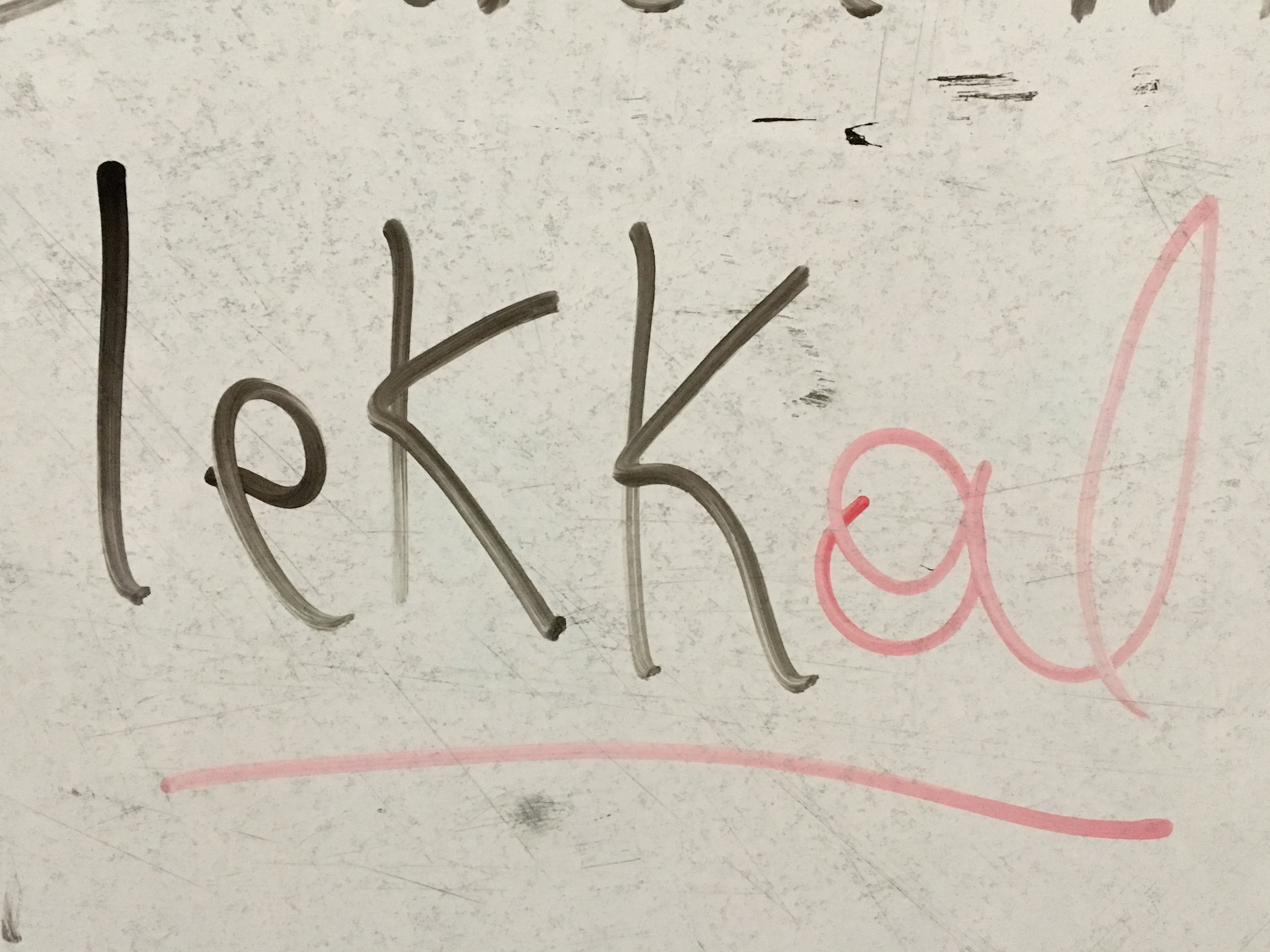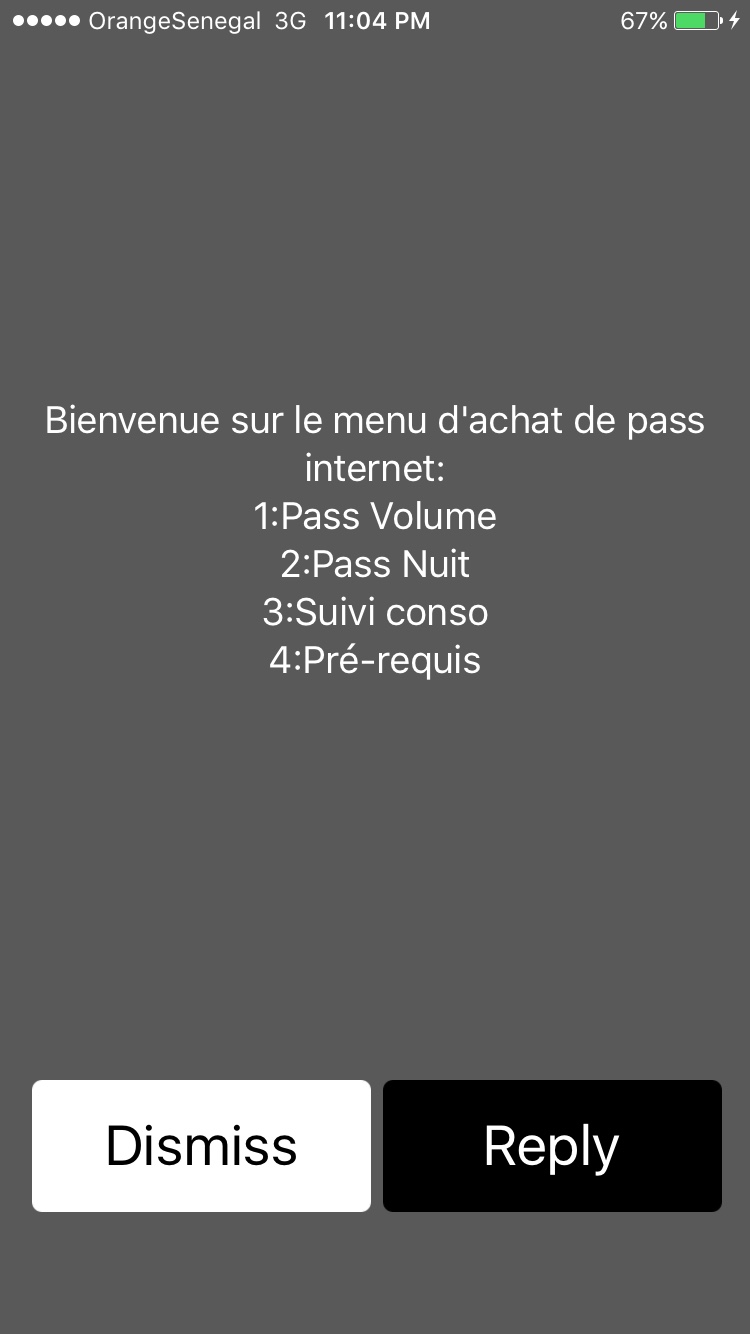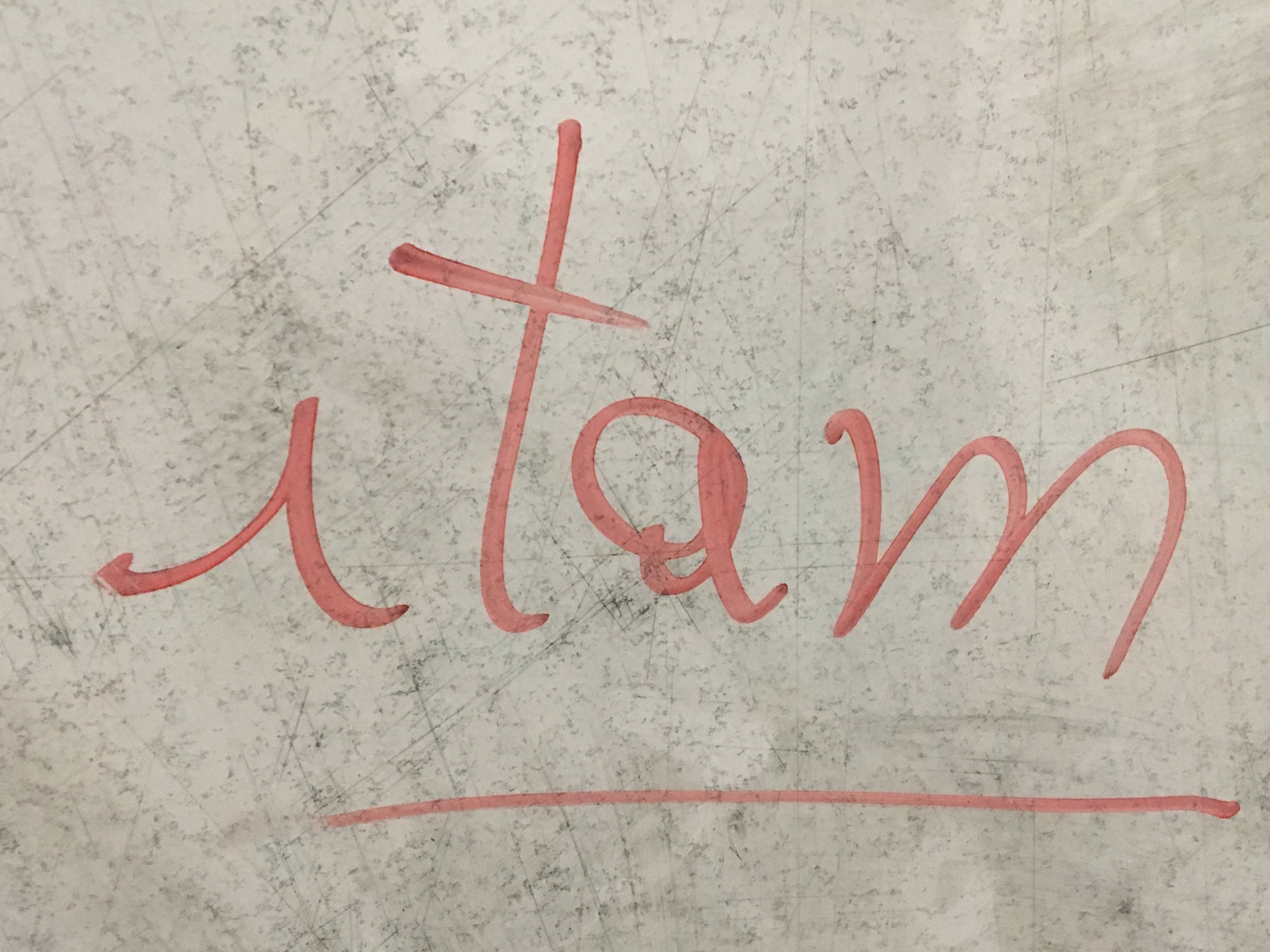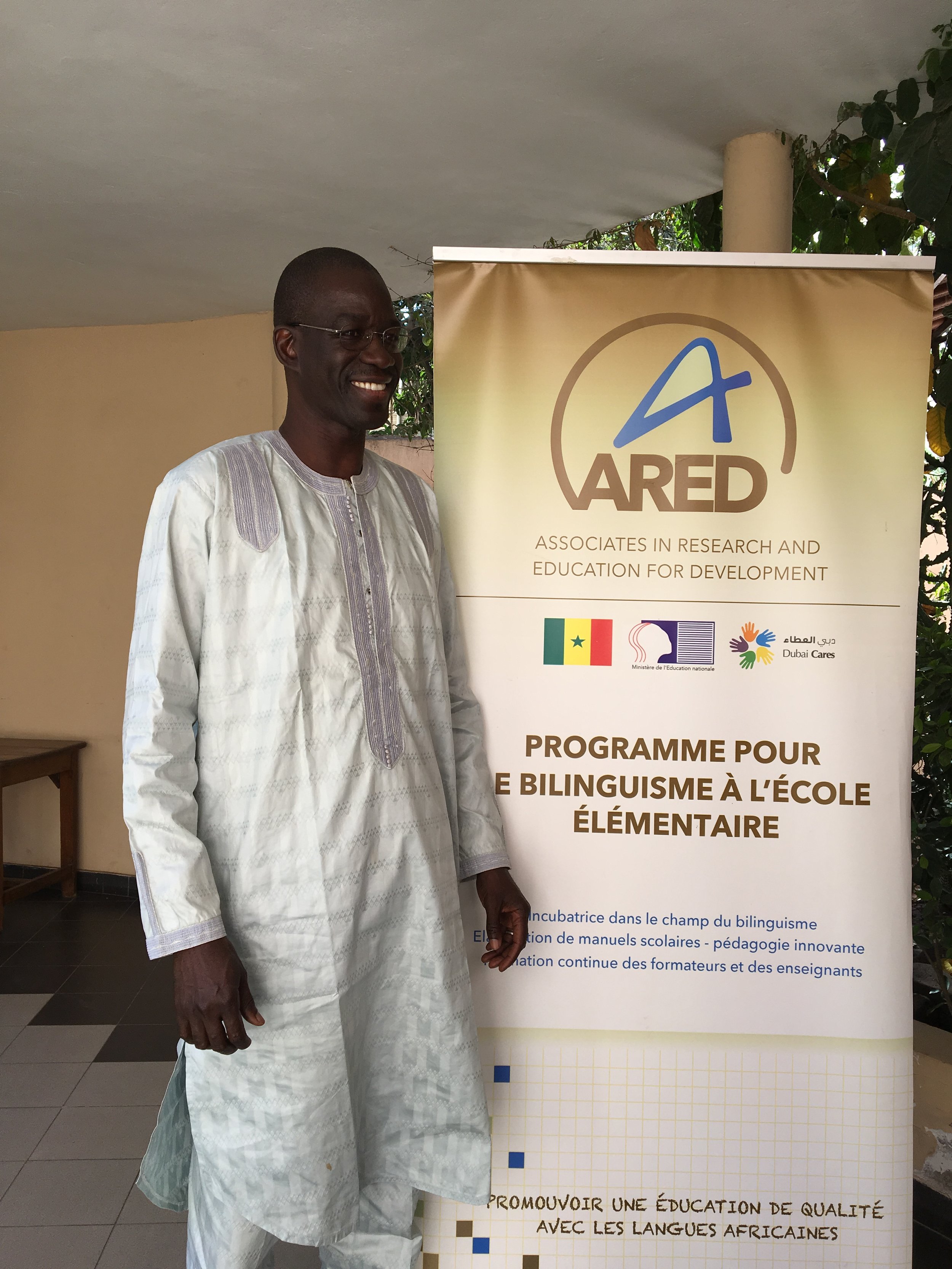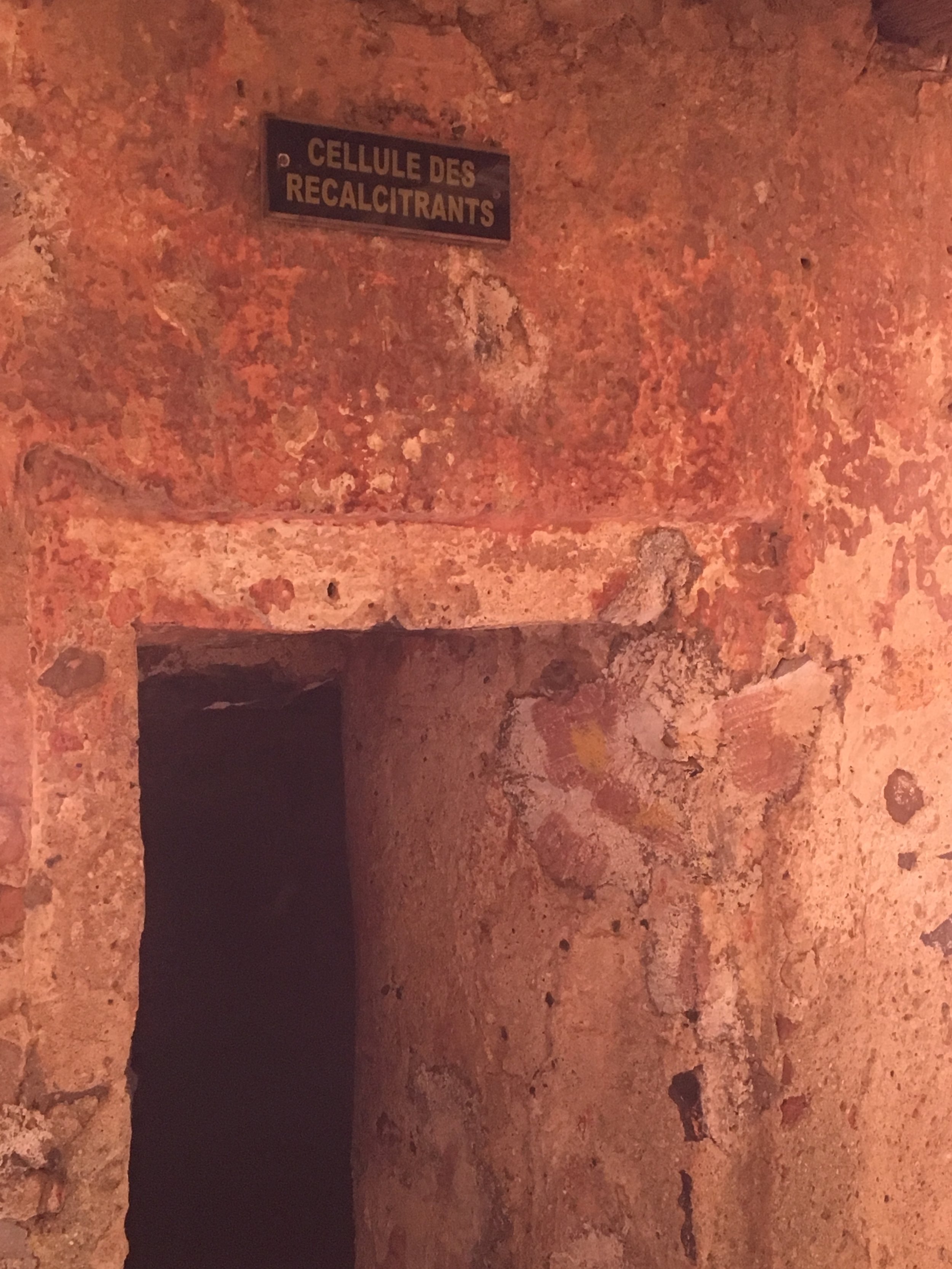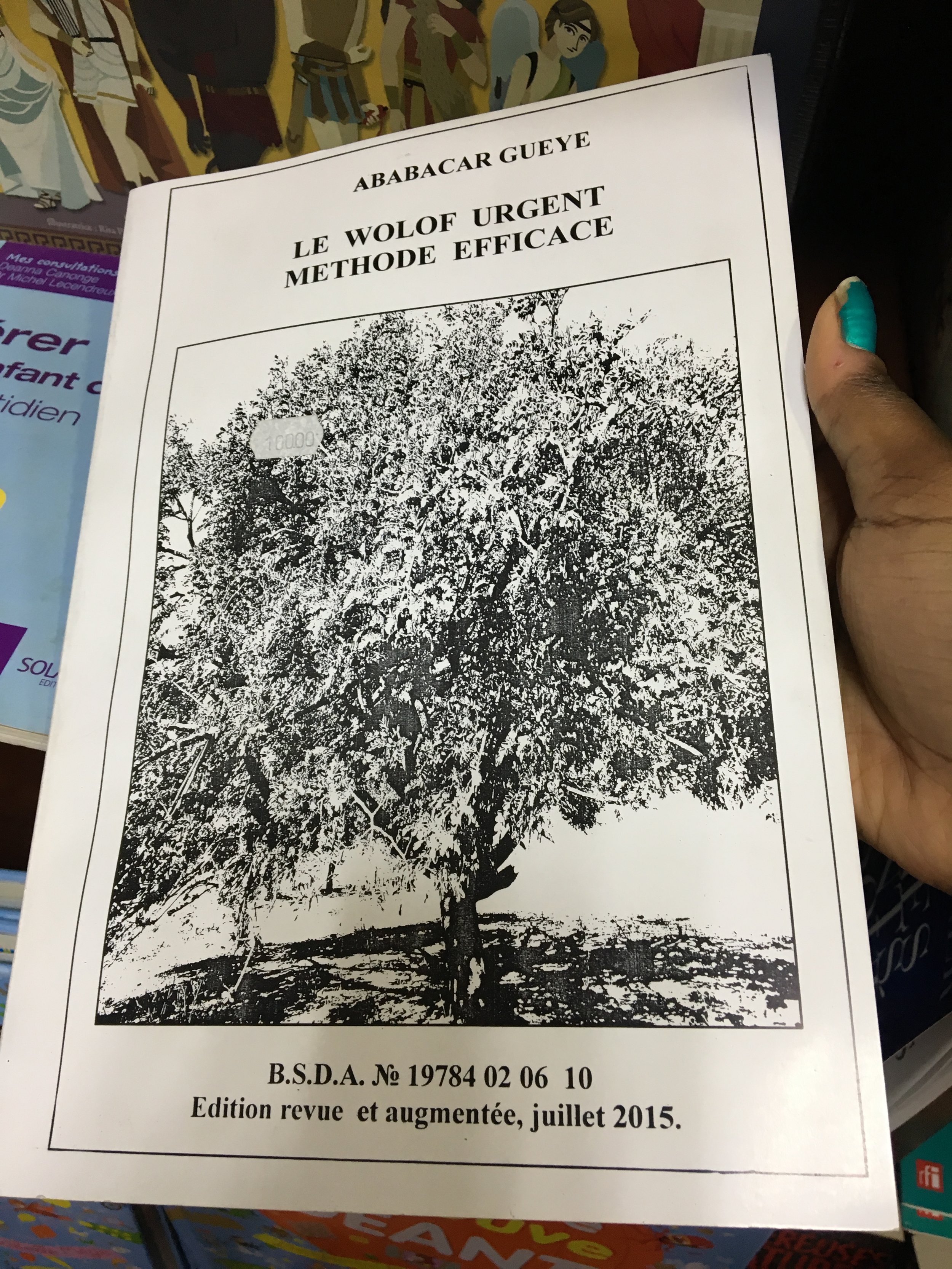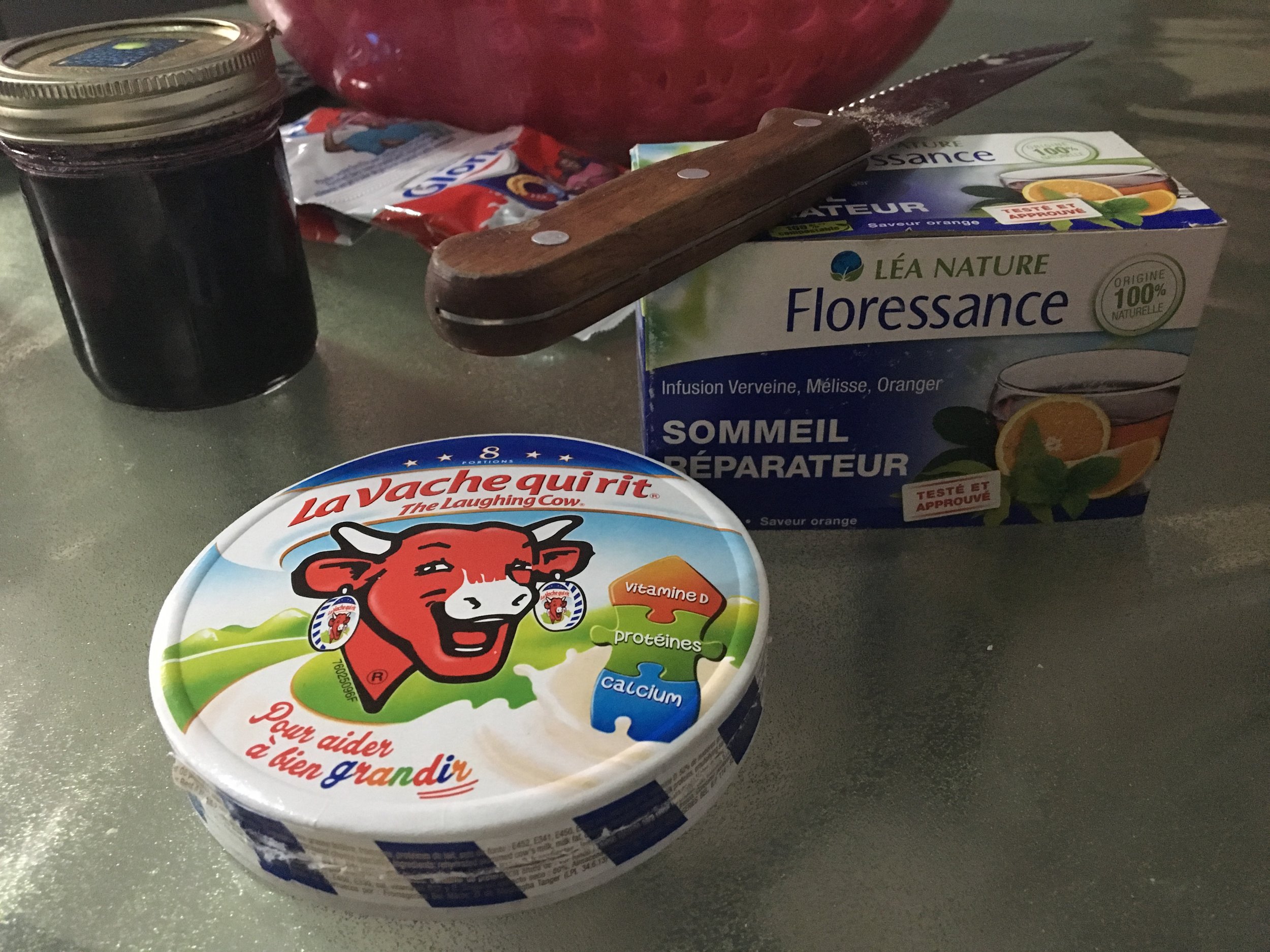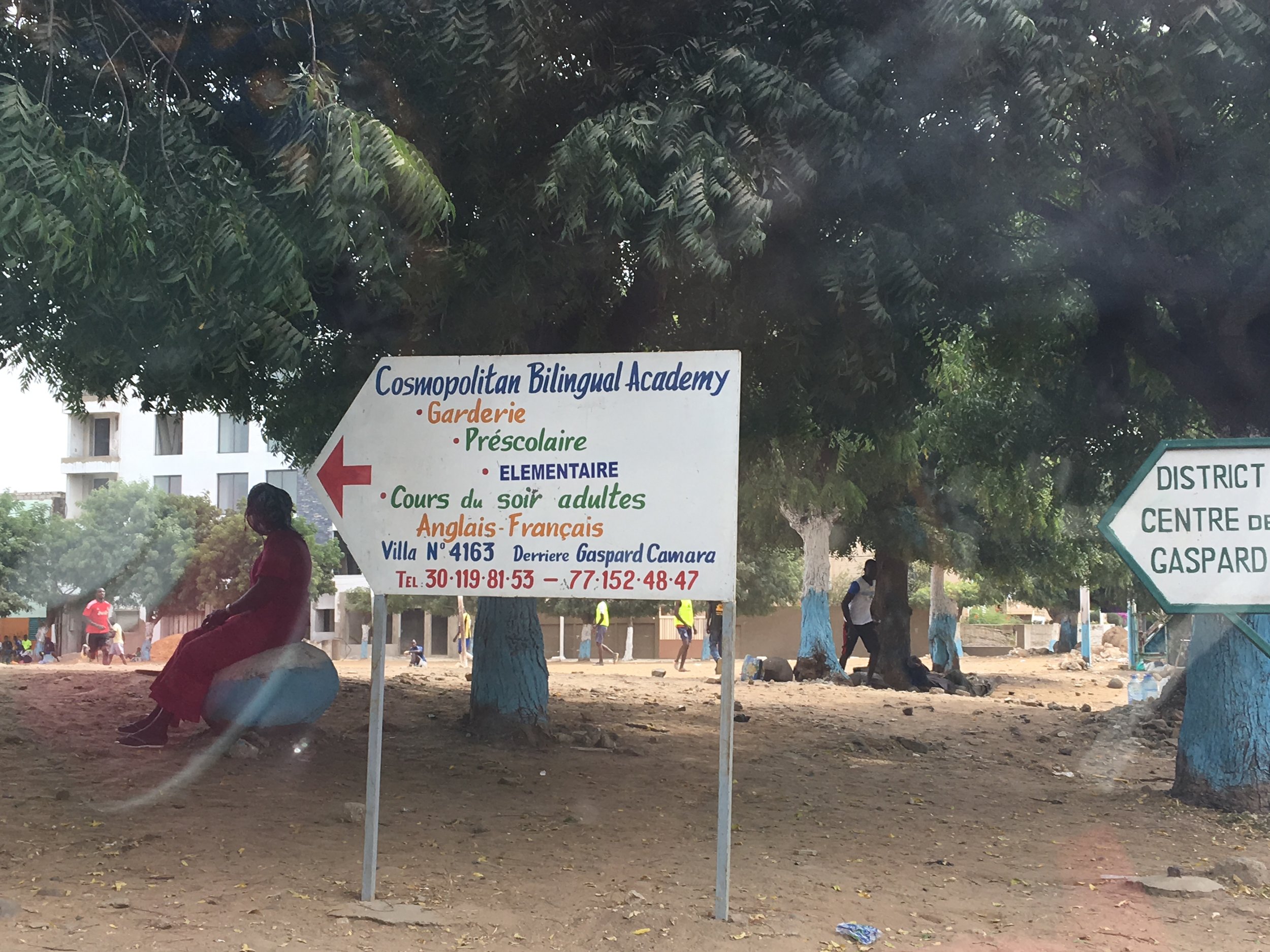Bind bi: Text Around Me
If close your eyes and listen to the language around you in the HLM market you will hear the fast-paced national language. However, the moment you open your eyes and look around you see something different. You see French. Today marks one day shy of being in Senegal for a week and I this is my analysis of written text around me. In the house, I enjoy siting around the dining table eating from the bowl and listening to the women of the house catch up on gossip in the local language. You hear Wolof in the house and you hear it in a variety of social settings. I also wake up in the morning and my evening nap to the call to prayer. In the picture below, you will find a picture of the home in which I am staying. On the outside, it looks quite plain and the inside is just as simple and unadorned. The only written text that can be seen by the public is that of English; a stop sign and the letter I wrote to my host family posted on the refrigerator.
On the streets of Dakar, French can be seen all around. Only 4 of the photos I have taken from my observations are in Wolof. Part of our class research was to visit a bookstore and survey the material. Didaktika is a children’s educational bookstore. I asked specifically if there were materials in Wolof. The sales associate showed me to only two books and the black and white book seen here is a Wolof language book with a French title. There were not books in the Wolof language published for children. What I see here could be compared to the language I saw in the Philippines. In the capital of Manila, the official language, Tagalog, could be seen everywhere. Conversely, in the provincial parts of the country there was a language shift and the local language was prominent of most signs.
In the journal article, Implementing Mother Tongue Instruction in the Real World (Piper, et al., 2016) one of the topics discussed is the resistance to mother tongue instruction. Parental support and lack of materials in the local language are presented as challenges. Those same challenges seem to exist with bilingual education programs to be implemented here in Senegal. In the bookstore Didaktika, there was a program planner hoping to increase literacy in French, when asked about the possibility of a national language becoming more dominant than French, I heard the same rhetoric that can be heard from parents. The message is that French is the language of success and opportunity and they do not see a rationale for learning Wolof, Pular, or Jola in schools.
Even if the parents prove to support the incorporation of local language into schools. The next challenge is creating materials and an environment that shares the same vision. As we saw in the bookstore there was virtually no materials in national languages. The other signs seen around the city could also prove to be discouraging. With students learning their first language, not seeing the value in their learning and only seeing French only hinders the efforts of multilingual education. Multilingualism has been argued to be a threat to national unity (Ouane & Glanz, 2011), however, I would argue that disregard of these local languages is a threat to national identity.
-Javonni McGlaurin
